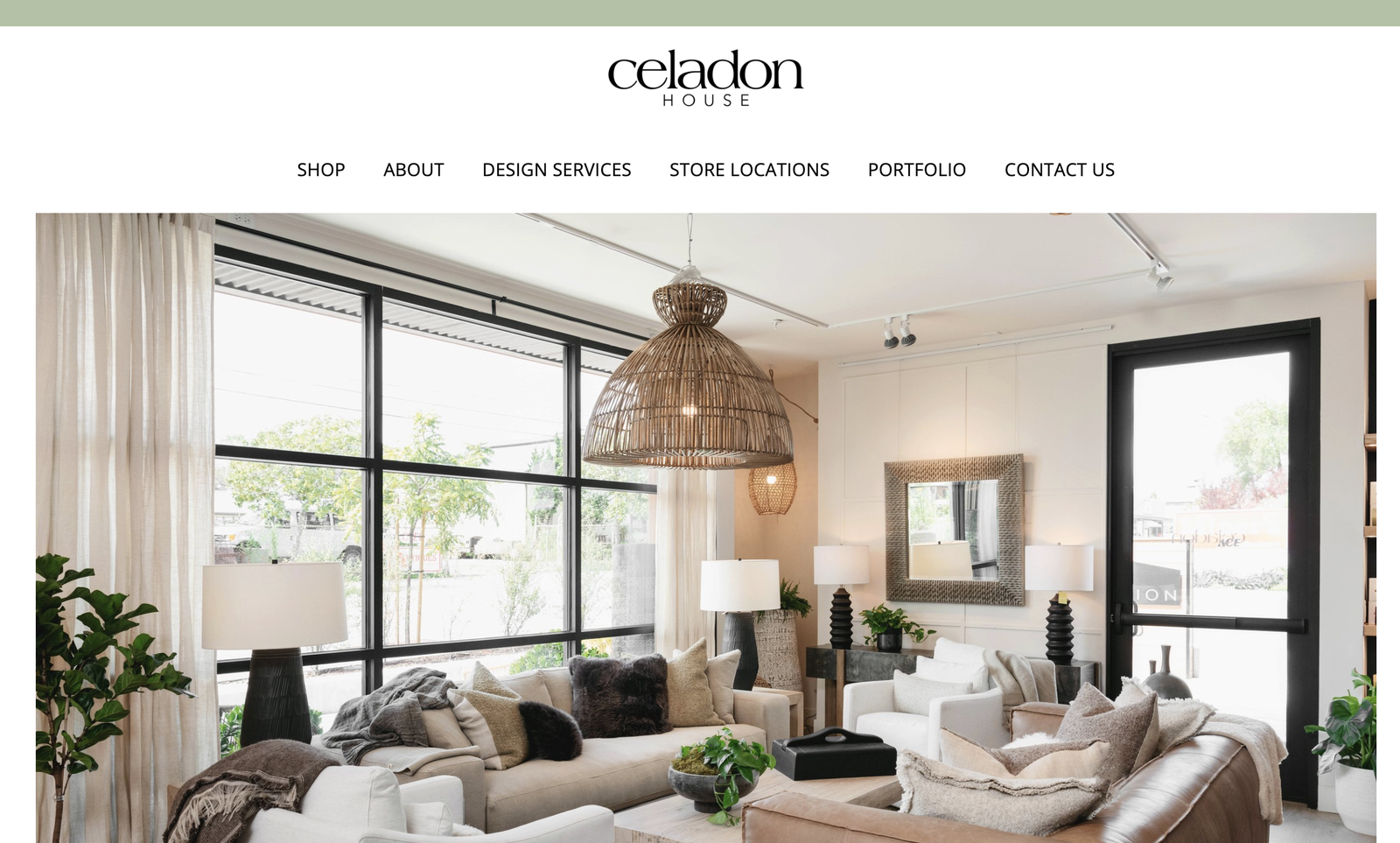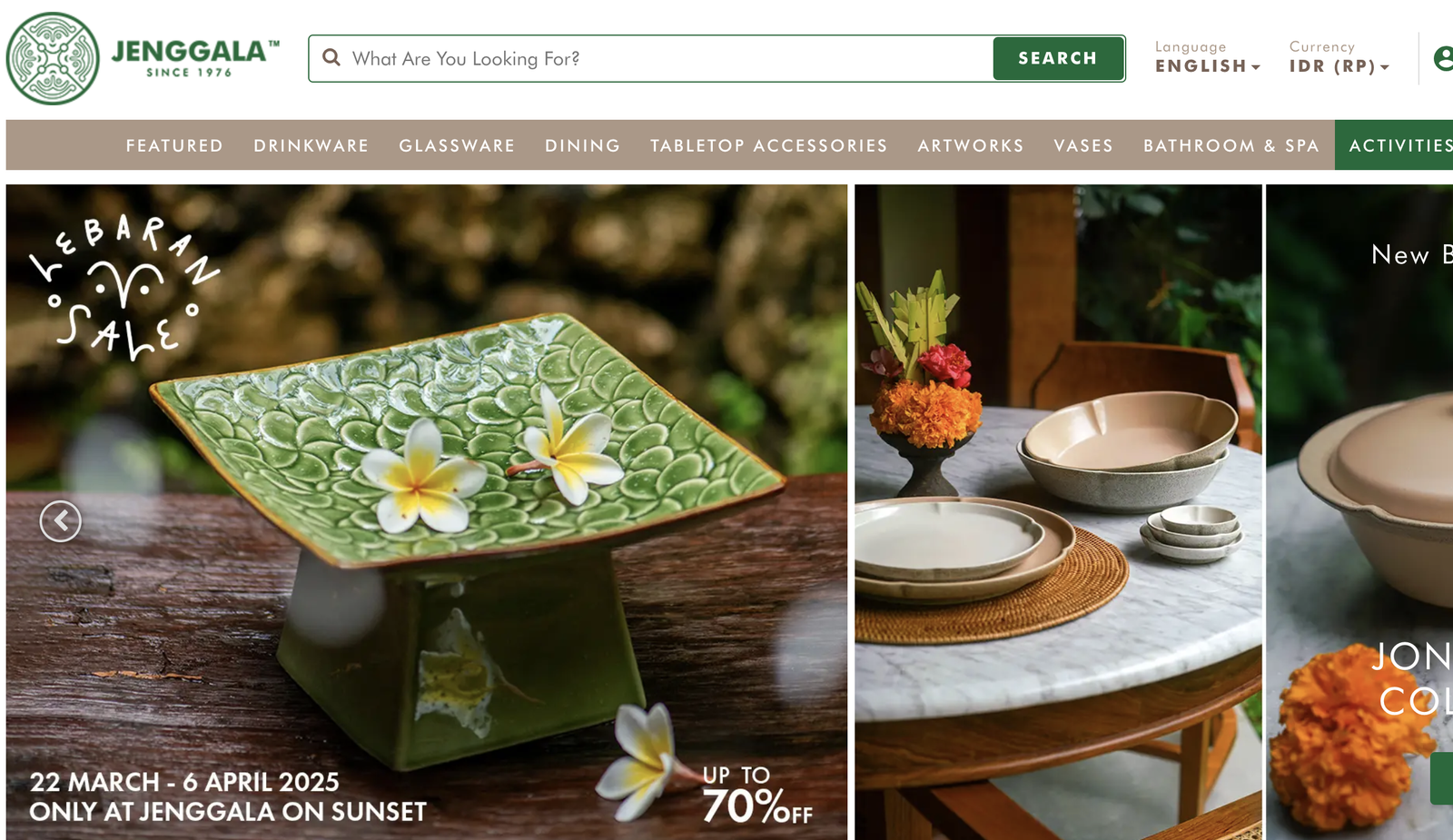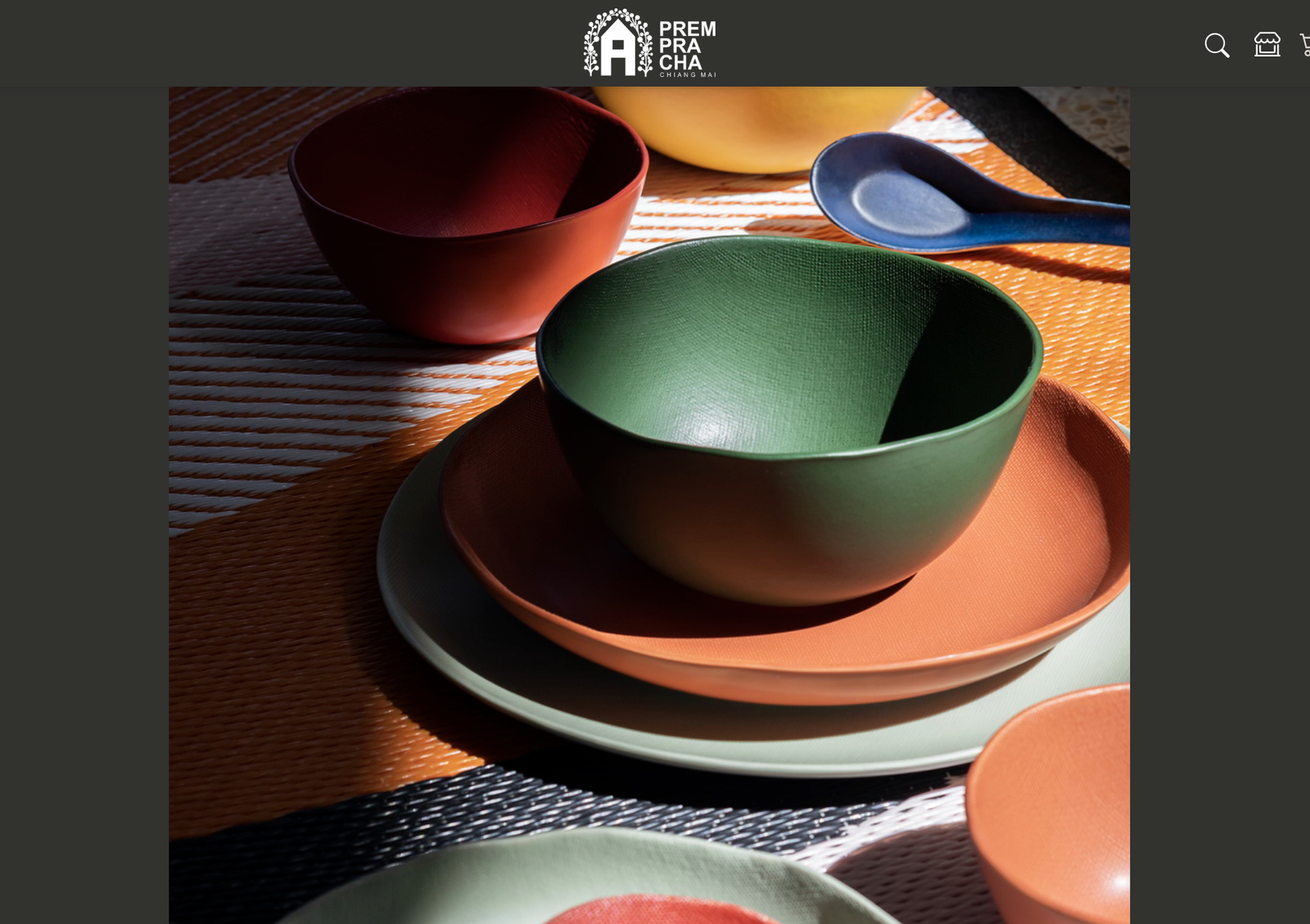Over the past five years, ceramic tableware for daily use has quietly become a rising star across Southeast Asia. Whether it’s a newly opened café in Bangkok, a fine-dining restaurant in Ho Chi Minh City, or an increasingly design-conscious home kitchen, ceramic dishes are showing up everywhere.
This trend is no accident. It reflects a broader transformation in Southeast Asia’s consumer culture—one shaped by rising aesthetic standards, evolving lifestyle habits, the explosive power of social media, and the emergence of cross-border eCommerce. In this article, we explore the driving forces behind ceramic tableware’s growth in Southeast Asia and provide practical insights for global kitchenware buyers, gift retailers, and cross-border sellers.
The Rise of “Aesthetic Living” in Southeast Asian Homes
In countries like Vietnam, Thailand, and Malaysia, an expanding urban middle class is shifting away from purely functional purchases and embracing products that elevate their lifestyle. Ceramic tableware—especially ceramic dinner sets for modern kitchens—is now part of a new “kitchen aesthetics economy.”
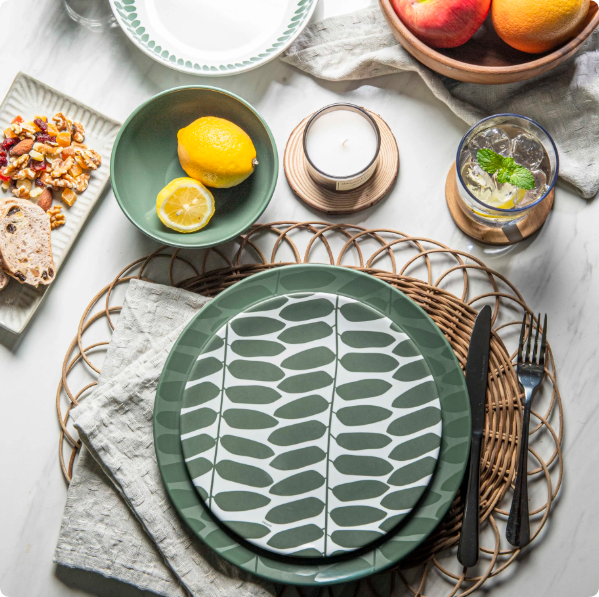
More consumers are styling their homes and kitchens with handcrafted ceramic bowls, minimalist dinner plates, and art-inspired mugs to create Instagram-worthy tablescapes for family meals or friend gatherings.
How Social Media Turns Ceramic into a Lifestyle Star
Visual-first platforms are driving product trends across Southeast Asia, with Instagram, TikTok, and Facebook Marketplace playing an especially powerful role in promoting ceramic tableware.
In addition, several region-specific platforms are fueling even deeper local engagement:
- Zalo (Vietnam): A homegrown social and lifestyle app where local KOLs frequently showcase ceramic tableware in cozy kitchen decor posts.
- Shopee Live: Livestream shopping has triggered ceramic gift box sales surges, especially around holiday seasons.
- Lazada Storefronts: Popular for themed brand collections like “Lifestyle Ceramics,” allowing ceramic brands to build strong digital identities.
Because of their photogenic appeal, ceramic products are featured heavily in lifestyle content. From handcrafted ceramic mugs in “morning routine” reels to vintage ceramic plates in “dinner table styling” videos, ceramics are now visual centerpieces that inspire instant buying decisions.
Local Ceramic Brands: Where Culture Meets Craftsmanship
Local Southeast Asian ceramic brands are making waves by blending cultural identity with high-quality craftsmanship. Many have gained loyal followings through a mix of social media, artisan markets, and branded e-commerce. Here are five standout local brands, along with their product highlights and sales channels:
| Brand Name | Country | Product Features | Main Sales Channels |
|---|---|---|---|
| Prempracha | Thailand | Hand-thrown ceramics with natural glazes, minimalist Zen-inspired design | Flagship store in Chiang Mai, official site, B2B hotels |
| Nanyang Clay | Singapore | Fuses Malay traditions with modern minimalism—small bowls, mini teapots | Online shop, design expos, gift collaborations |
| Kokkino | Malaysia | Specializes in boutique ceramic coffee cups—ergonomic and heat-retaining | Coffee festivals, social commerce, Shopee flagship |
| Jenggala | Indonesia | Inspired by tropical flora and traditional motifs—vibrant and unique styles | Tourist retail, hospitality OEMs, cross-border exports |
| Celadon House | Thailand | Focuses on Northern Thai celadon with traditional motifs and vintage glazes | Flagship stores in Bangkok, department stores, DTC site |
These brands stand out by integrating local heritage into contemporary design. Their flexible distribution models—blending offline, eCommerce, and B2B—help expand reach across and beyond Southeast Asia.
Material Comparison: Why Ceramic Wins in Southeast Asia
Ceramic offers a compelling blend of durability, aesthetic value, and emotional appeal compared to plastic, stainless steel, or glass. Here’s a quick comparison of popular tableware materials:
| Material Type | Heat Resistance | Visual Appeal | Sustainability | Cost | Best Use Cases |
|---|---|---|---|---|---|
| Ceramic | High | High | Medium-High | Medium | Home kitchens, restaurants, gift packaging |
| Plastic | Low | Medium | Low | Low | Outdoor dining, kids’ tableware |
| Stainless Steel | High | Low | High | Medium | Travel kits, fast food, utility-based usage |
| Glass | Medium | High | Medium | Medium | Cold dishes, desserts, short-term display |
In Thailand and Malaysia, many coffee chains now use ceramic mugs for specialty coffee, which enhances beverage presentation, maintains temperature longer, and improves the customer experience.
Holiday Gifting and Cross-Border eCommerce Fuel the Market
Festive gifting is a major sales driver for ceramic tableware in Southeast Asia. During Ramadan, Songkran, weddings, and end-of-year celebrations, ceramic tableware gift sets become go-to presents.
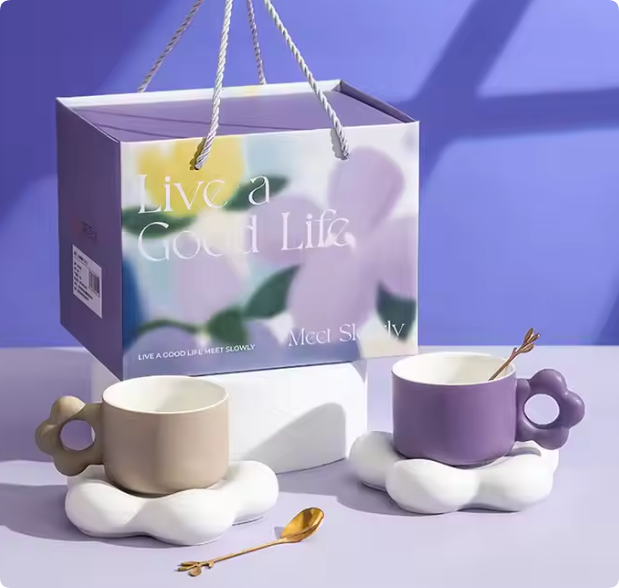
Cross-border eCommerce platforms like Shopee, Lazada, and TikTok Shop have lowered the entry barrier for ceramic brands. By designing limited-edition packaging, seasonal styles, and themed bundles, brands tap into the emotional value of gifting.
- In Vietnam, tea sets with traditional motifs are favored for elder gifts.
- In Malaysia, ceramic rice bowl sets are popular for family dinners during Eid.
- In the Philippines, customers value packaging aesthetics—mugs with custom blessing texts often see a 50% sales spike near holidays.
The Future: Eco-Friendly + Personalized = Long-Term Value
The new generation of Southeast Asian consumers is increasingly eco-conscious and design-savvy. They prefer eco-friendly ceramic tableware with regional identity, often made with natural clay, lead-free glaze, and sustainable packaging.
Many emerging brands now offer customization options such as engraving, personalized colors, and limited collections—encouraging repeat purchases and deeper customer loyalty.
OEM and ODM suppliers must now adapt to small-batch, multi-SKU, and fast-reaction production models to meet this demand.
Frequently Asked Questions (FAQ)
Q1: Which Southeast Asian countries have the highest demand for ceramic tableware?
A1: Thailand and Indonesia lead the market, especially in hospitality and gifting segments.
Q2: Is ceramic tableware suitable for cross-border shipping?
A2: Yes. Reputable OEM manufacturers use foam inserts, double-wall packaging, and reinforced boxes to ensure safe delivery.
Q3: Can ceramic tableware be customized for local holidays or brands?
A3: Absolutely. Most OEM factories offer logo printing, seasonal illustrations, and custom color matching.
Q4: Is ceramic more eco-friendly than glass?
A4: Ceramic is longer-lasting and made from natural materials, making it relatively more eco-friendly over time.
Q5: What are the key features of ceramic tableware for Southeast Asian restaurants?
A5: Heat resistance, scratch-proof surface, easy stacking, and simple cleaning. High-temperature glazed ceramics are highly recommended.
Conclusion
Ceramic tableware is reshaping dining culture across Southeast Asia. From lifestyle aesthetics and social content trends to localized branding and omnichannel strategies, this product category has a solid foundation for long-term growth.
For global kitchenware brands, gift merchants, and cross-border sellers, finding a reliable ceramic OEM & ODM partner in China is the key to unlocking Southeast Asia’s booming demand.
EKA, based in China, specializes in manufacturing daily-use ceramic tableware and offers customized OEM and ODM solutions to global home and kitchenware brands. We help you bring design, quality, and local insights together—so your brand can grow where the market is headed.

